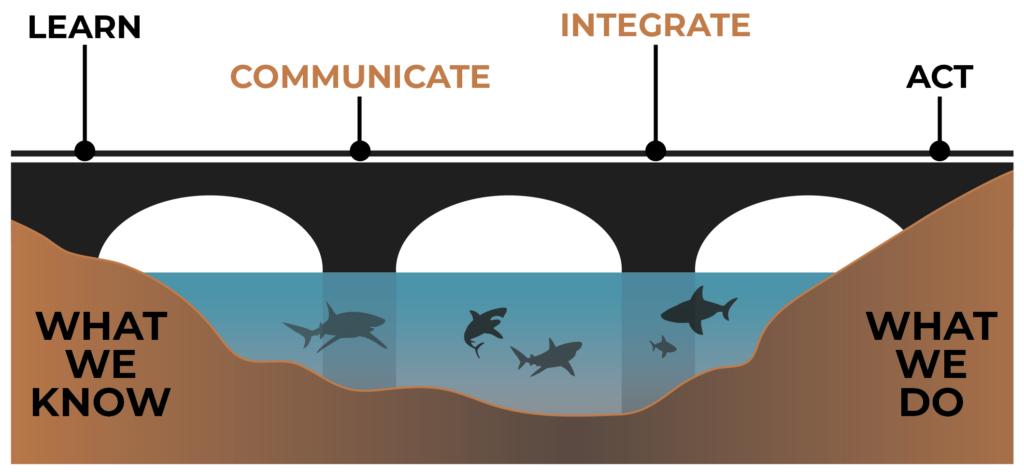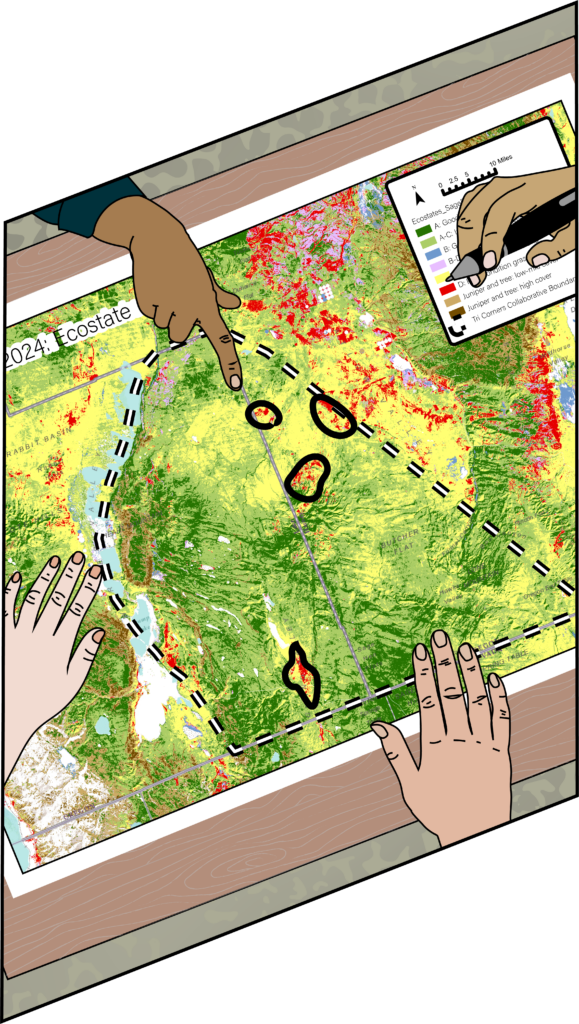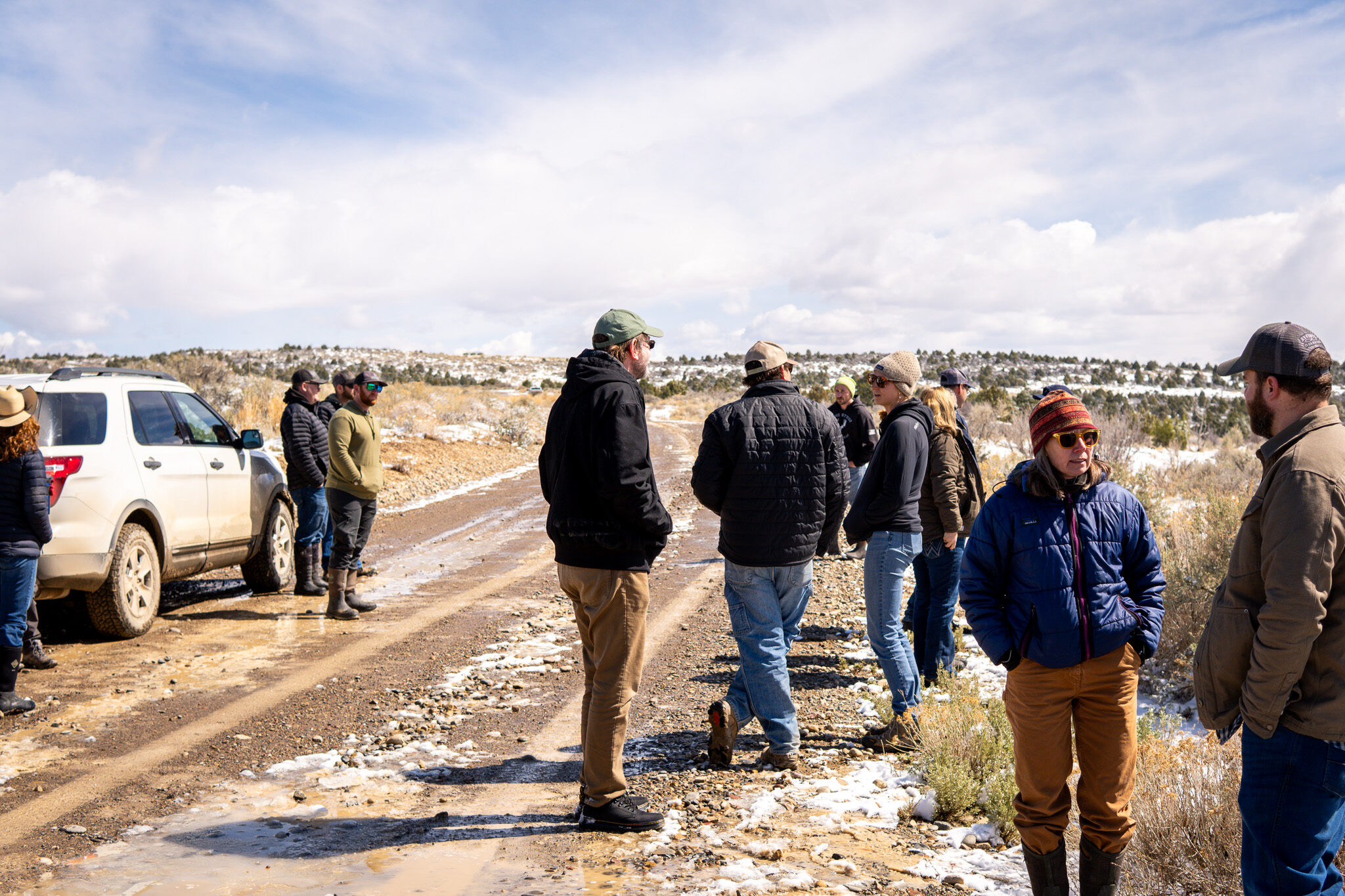
The Sagebrush Technical Transfer Network


EQUIPPING YOU TO DO TECHNICAL TRANSFER
Technical transfer requires significant time, skills, and expertise, which are rarely explicitly taught or supported. Thus, many people engage in technical transfer with limited capacity or resources. Led by the Institute for Natural Resources and the Intermountain West Joint Venture, the Sagebrush Technical Transfer Network seeks to equip those who support others in using technical information with resources, training, and a professional network to support and strengthen their technical transfer work.
our vision
Decisions relating to resource management are informed by relevant science, information, and technology. Science producers work closely with end-users to deliver information in an accessible and interpretable format, and managers and practitioners are empowered to incorporate this information into their decision-making.
A Professional Network
The Sagebrush Technical Transfer Network is a community of practice. We share technical transfer successes and lessons learned, host speakers, and support Network members in developing their technical transfer skills. Anyone is welcome. Subscribe now!
Tech Transfer Resources
Our team develops resources to build the practice of technical transfer. Drawing from the expertise of our Network, we’ve developed a Technical Transfer Framework to support technical transfer planning, implementation, and evaluation. Check out the Framework.
Training Opportunities
Our team hosts workshops on building technical transfer skills tailored to your needs. Learn more about our upcoming offerings.
Learn more about technical transfer
What is technical transfer?
Technical transfer is a collaborative, participatory practice that supports the integration of relevant science, data, technology, and practices into natural resource management decisions and actions.
Why is technical transfer needed?
The rangeland profession has made great strides in producing applied science, datasets, maps, tools, and practices to support resource management. Technological advances provide opportunities to use a wealth of powerful new knowledge in decision-making. However, the adoption and use of these products and practices in resource management have lagged behind their development. It is often difficult for resource managers to access, interpret, integrate, or apply this information to their management decisions, and the large volume of products leads to information overload.
Who does technical transfer?
People with a variety of backgrounds have a place in technical transfer. Technical transfer can be done by dedicated technical transfer professionals, university extension or research faculty, scientists, agency resource specialists or biologists, communications specialists, and anyone else who supports others in using technical information in resource management.
Are there other names for technical transfer?
You may have heard technical transfer referred to as extension, technology transfer, science-to-implementation, science-to-practice, science integration, or other terms.
What does technical transfer look like?
Technical transfer bridges what we know and what we do. Concerted, collaborative, bidirectional effort is needed to move technical information developed from learning and knowledge generation processes into action. Communicating and integrating technical information—key technical transfer actions—help bridge this gap.

| LEARN | Learning happens through the conventional scientific process and other means of generating and sharing knowledge. Scientists and others contribute to a body of knowledge, ideally involving managers and end users through co-production. Other forms of knowledge, such as place-based local expertise, Indigenous Knowledge*, and peer-to-peer learning networks, are elevated alongside Western science. |
| COMMUNICATE | For academic audiences, knowledge is typically shared through journal articles and scientific conferences. For broader audiences, communication highlights key takeaways, visualizes information creatively, and paints a narrative. However, communicating about every scientific study or product perpetuates information overload for managers and practitioners due to the volume of data, science, and tools. |
| INTEGRATE | The most impactful technical transfer filters and distills the most actionable information and best practices from a wide body of knowledge. This approach integrates important, relevant, digestible, and actionable information. For maximum impact, technical transfer is conducted in collaboration with specific audiences and applied within the context of real-world management decisions, actions, or questions. |
| ACT | Resource managers are empowered to make decisions informed by relevant science, data, technology, and knowledge. Local communities, diverse values, and agency or group policies and norms also guide decisions. |
*We emphasize the importance of Indigenous Knowledge and other ways of knowing as equal to Western Science. However, technical transfer is not an appropriate process for engaging with Indigenous Knowledge. Indigenous Knowledge requires relationships with Indigenous Peoples through a process that is participatory and inclusive, not extractive and appropriative. Mutually beneficial partnerships centered in place, respecting Tribal and Indigenous sovereignty and land rights, protecting Indigenous Knowledge and Indigenous People, and acknowledging historical context and injustice are one model for integrating Indigenous Knowledge with decision-making. This model likely differs from how practitioners engage with Western Science.

The Sagebrush Technical Transfer Network offers audience-centered skill-building resources and opportunities.
The Technical Transfer Framework
The Technical Transfer Framework provides a flexible, 5-step guide to planning and implementing what is done before, during, and after technical transfer. The Framework is a participatory resource for people engaging in the art and science of technical transfer.
our training opportunities
Our team is skilled in developing and hosting in-person and virtual workshops to help your team build technical transfer skills.

Get in touch.
To join our Network and be invited to our Community of Practice sessions, join our mailing list. Or, drop us a line with your questions and comments.